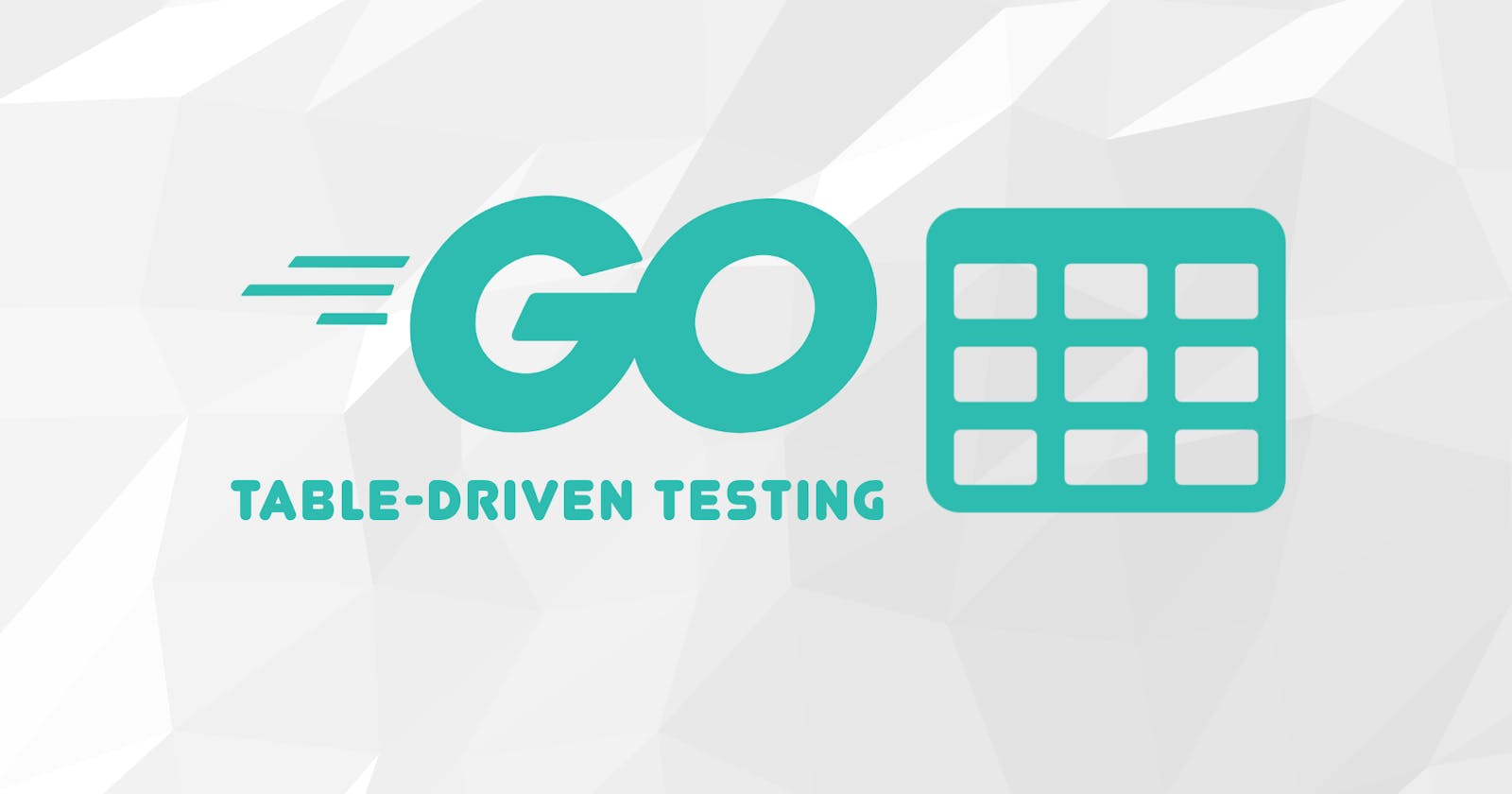1.What are Table-Driven Unit Tests?
In the world of software development, writing effective and reliable tests is crucial to ensure the quality and correctness of your code. Go (Golang), with its focus on simplicity and efficiency, offers a powerful testing framework that includes a handy technique called table-driven unit tests. In this article, we will explore table-driven tests and how they can simplify your testing efforts.
Table-driven unit tests, also known as parameterized tests or data-driven tests, provide a structured approach to writing tests in Go. Instead of writing individual test cases, table-driven tests use a tabular format to define multiple input and expected output combinations within a single test function. This approach allows you to test a wide range of scenarios and edge cases with minimal code duplication.
Table-driven tests with subtests can be a helpful pattern for writing tests to avoid duplicating code when the core test logic is repetitive.
If a system under test needs to be tested against multiple conditions where certain parts of the the inputs and outputs change, a table-driven test should be used to reduce redundancy and improve readability.
2.Advantages of Table-Driven Testing
Concise and Readable: Table-driven tests help eliminate redundant code by providing a clear separation between the test case definitions and the test execution logic. This makes the test code more readable and easier to maintain.
Scalability: As your codebase grows, so does the number of test cases. With table-driven tests, adding new test cases or modifying existing ones becomes straightforward. You can simply extend or modify the test table without cluttering your test function.
Coverage: By explicitly defining a set of test cases, table-driven testing ensures comprehensive coverage of different input combinations. This approach helps identify corner cases and edge scenarios that might be missed with traditional unit tests.
3. Table-Driven Testing Examples
Before using table-driven testing:
// func TestSplitHostPort(t *testing.T)
host, port, err := net.SplitHostPort("192.0.2.0:8000")
require.NoError(t, err)
assert.Equal(t, "192.0.2.0", host)
assert.Equal(t, "8000", port)
host, port, err = net.SplitHostPort("192.0.2.0:http")
require.NoError(t, err)
assert.Equal(t, "192.0.2.0", host)
assert.Equal(t, "http", port)
host, port, err = net.SplitHostPort(":8000")
require.NoError(t, err)
assert.Equal(t, "", host)
assert.Equal(t, "8000", port)
host, port, err = net.SplitHostPort("1:8")
require.NoError(t, err)
assert.Equal(t, "1", host)
assert.Equal(t, "8", port)
After using table-driven testing:
// func TestSplitHostPort(t *testing.T)
tests := []struct{
give string
wantHost string
wantPort string
}{
{
give: "192.0.2.0:8000",
wantHost: "192.0.2.0",
wantPort: "8000",
},
{
give: "192.0.2.0:http",
wantHost: "192.0.2.0",
wantPort: "http",
},
{
give: ":8000",
wantHost: "",
wantPort: "8000",
},
{
give: "1:8",
wantHost: "1",
wantPort: "8",
},
}
for _, tt := range tests {
t.Run(tt.give, func(t *testing.T) {
host, port, err := net.SplitHostPort(tt.give)
require.NoError(t, err)
assert.Equal(t, tt.wantHost, host)
assert.Equal(t, tt.wantPort, port)
})
}
Test tables make it easier to add context to error messages, reduce duplicate logic, and add new test cases.
We follow the convention that the slice of structs is referred to as tests and each test case tt. Further, we encourage explicating the input and output values for each test case with give and want prefixes.
tests := []struct{
give string
wantHost string
wantPort string
}{
// ...
}
for _, tt := range tests {
// ...
}
4.When to use Table-Driven Testing
While table-driven tests offer several benefits and are widely used in Go, there may be scenarios where they are not the most appropriate choice. Here are a few situations where table-driven tests might not be the ideal approach:
Complex Test Scenarios: If your test cases involve complex setups, interactions, or dependencies, table-driven tests may not provide the necessary flexibility. In such cases, it might be more appropriate to write individual test functions tailored to handle the specific complexities.
Varying Preconditions: If your test cases require different preconditions or setups that cannot be easily expressed in a tabular format, table-driven tests may become cumbersome. Writing separate test functions for each specific precondition might be a better option.
Large Input Space: When dealing with a large input space, such as testing a cryptographic algorithm with numerous possible inputs, it may not be practical or feasible to enumerate all the test cases in a table. In such cases, you might need to resort to other testing techniques, like property-based testing.
Custom Assertions: If your test cases require custom assertions or specific result validations that cannot be easily expressed within the table-driven approach, it might be more appropriate to write individual test functions with dedicated assertion logic.
Readability and Clarity: While table-driven tests promote code reuse and simplicity, there are cases where they can make the test code less readable, especially if the table becomes large or complex. In such situations, using individual test functions with explicit test case definitions might improve the clarity of the tests.
Remember, the choice between table-driven tests and other testing approaches depends on the specific requirements and characteristics of your codebase and test scenarios. It's important to evaluate the trade-offs and select the testing technique that best suits your needs in terms of maintainability, readability, and test coverage.
5.Conclusion:
Table-driven unit tests provide an elegant and efficient way to write comprehensive test cases in Go. By organizing tests in a tabular format, developers can easily add, modify, and maintain test cases, ensuring thorough code coverage and reducing code duplication. Adopting table-driven testing in your Go projects can lead to more robust and reliable codebases.
